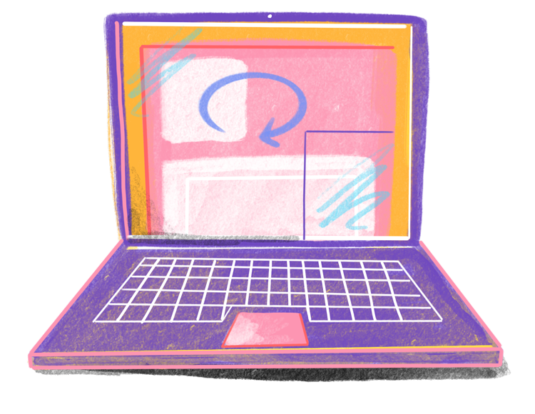Prior studies suggest inviting patients to read their visit notes (OpenNotes) has important benefits for patient engagement. We utilized survey data to investigate our hypothesis that patients who read more notes would report greater shared decision making (SDM).
Patient Experience
The Importance of Visit Notes on Patient Portals for Engaging Less Educated or Nonwhite Patients: Survey Study
Less educated and nonwhite patients using the portal each assigned higher importance to reading notes for several health behaviors than highly educated and white patients, and may find transparent notes especially valuable for understanding their health and engaging in their care. Facilitating access to notes may improve engagement in health care for some vulnerable populations who have historically been more challenging to reach.
Who Reads Their Doctor’s Notes? Examining the Association between Preconceptions and Accessing Online Clinical Notes
Patients who use online portals to review their clinicians’ notes may become more actively involved in their healthcare, but the healthcare industry knows little about factors that may facilitate or inhibit patients’ use of this new practice.
Perceptions of Primary Care Notes by Patients With Mental Health Diagnoses
There are concerns regarding whether patients with mental illness should be provided with access to their electronic medical records. This study compared perceptions of patients with (n = 400) and without (n = 2,134) a mental health diagnosis regarding access to primary care clinic notes through secure online portals. Eligible participants viewed at least 1 clinic note during a 12-month period. Administrative data were used to stratify patients by mental health diagnosis. As we hypothesized, patients with and without mental health diagnoses had similar perceptions about online access to notes.
A Multi-Stakeholder Consensus-Driven Research Agenda for Better Understanding and Supporting the Emotional Impact of Harmful Events on Patients and Families
Background
The nature and consequences of patient and family emotional harm stemming from preventable medical error, such as losing a loved one or surviving serious medical injury, is poorly understood. Patients and families, clinicians, social scientists, lawyers, and foundation/policy leaders were brought together to establish research priorities for this issue.
Methods
A one-day conference of diverse stakeholder groups to establish a consensus-driven research agenda focused on (1) priorities for research on the short-term and long-term emotional impact of harmful events on patients and families, (2) barriers and enablers to conducting such research, and (3) actionable steps toward better supporting harmed patients and families now.
Tackling Ambulatory Safety Risks Through Patient Engagement: What 10,000 Patients and Families Say About Safety-Related Knowledge, Behaviors, and Attitudes After Reading Visit Notes
Background: Ambulatory safety risks including delayed diagnoses or missed abnormal test results are difficult for clinicians to see, because they often occur in the space between visits. Experts advocate greater patient engagement to improve safety, but strategies are limited. Patient access to clinical notes (“OpenNotes”) may help close the safety gap between visits.
Methods: We surveyed patients and families who logged on to the patient portal and had at least one ambulatory note available in the past 12 months at two academic hospitals during June to September 2016, focusing on patient-reported effects of OpenNotes on safety knowledge, behaviors, and attitudes.
Patients perceptions of their doctors’ notes and after‐visit summaries: A mixed methods study of patients at safety‐net clinics
Patients are increasingly offered electronic access to their doctors’ notes, and many consistently receive paper After-Visit Summaries. Specific feedback from patients about notes and summaries are lacking, particularly within safety-net settings.
Will use of patient portals help to educate and communicate with patients with diabetes?
Chronic disease management can require daily attention, and increased levels of patient activation and engagement. We examined whether patients with diabetes perceive a greater benefit to having electronic access to their doctors’ clinic notes compared to patients without diabetes. We hypothesized that easy electronic access to these notes may help patients with self-care by improving education and communication.
What patients value about reading visit notes: a qualitative inquiry of patient experiences with their health information
Background: Patients are increasingly asking for their health data. Yet, little is known about what motivates patients to engage with the electronic health record (EHR). Furthermore, quality-focused mechanisms for patients to comment about their records are lacking.
Objective: We aimed to learn more about patient experiences with reading and providing feedback on their visit notes.
Methods: We developed a patient feedback tool linked to OpenNotes as part of a pilot quality improvement initiative focused on patient engagement. Patients who had appointments with members of 2 primary care teams piloting the program between August 2014-2015 were eligible to participate. We asked patients what they liked about reading notes and about using a feedback tool and analyzed all patient reports submitted during the pilot period. Two researchers coded the qualitative responses (κ=.74).
Inviting patients and care partners to read doctors’ notes: OpenNotes and shared access to electronic medical records
Care partners were more likely to access and use patient portal functionality and reported improved communication with patients’ providers at follow-up. Our findings suggest that offering patients and care partners access to doctors’ notes is acceptable and improves communication and patients’ confidence in managing their care.



